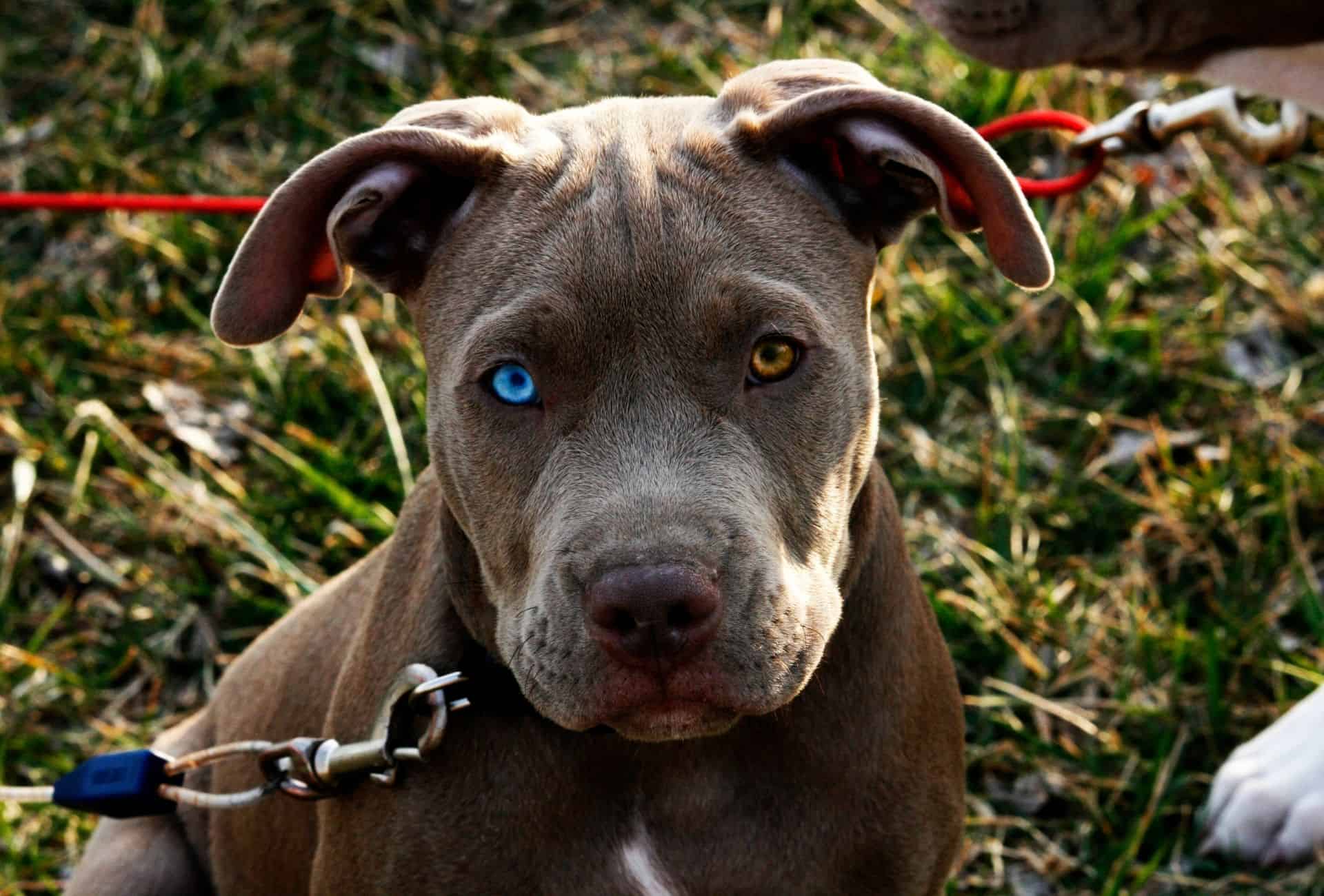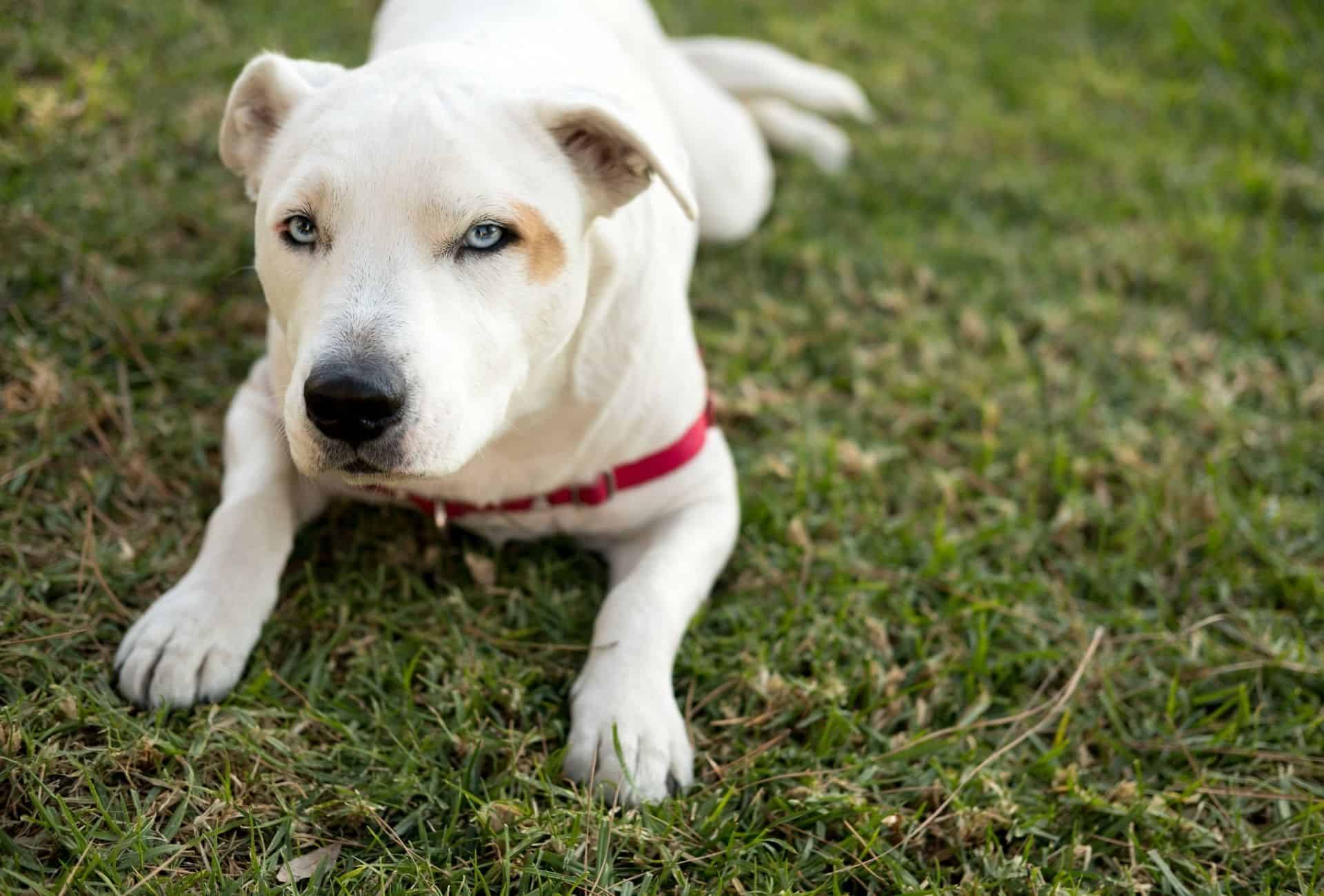There’s no denying that crystal blue eyes in dogs are a rarity and are certainly beautiful to look at. More often than not, breeders even charge a premium on puppies with these unique blue eyes, as the demand for their adoption is greater than those with the much more common brown eyes.
However, there is a controversy around blue eyed pitbulls, making them less than desirable in their own community. Is it considered normal for Pitbull puppies to have these blue eyes and what causes them in the first place?
Should blue eyes in pitbulls be seen as a desirable trait or the result of a genetic mutation that makes them less so in the eyes of the APBT community? In this article, we take a look at what causes this blue eyed phenomenon in the pitbull.
Clarification Regarding the Use of the Word “Pitbull”
Before I begin my discussion, let me first explain that the word “Pitbull” is an umbrella term used to address dog breeds that descended from Bulldogs and Terriers.
They have the same origin and genetic makeup that’s why they are labeled as such. These dogs include the American Bully, the American Pitbull Terrier, the Staffordshire Bull Terrier, and the American Staffordshire Terrier.
In this article, I am going to use the word Pitbull in this context and will not only focus on the American Pitbull Terrier.
A blue-eyed Pitbull is a rare Pitbull variety that is notable for its unusual eye color. They are prone to many congenital disorders and eye diseases than their brown and hazel-eyed cousins due to their genetic makeup. However, many Pitbull enthusiasts still prefer them because their striking blue eyes are really a sight to behold.
It is essential to differentiate these adult blue-eyed Pitbulls to newborn pups who have the same eye characteristic. Young Pitbulls and even other dog breeds usually have a light blue eye color that changes as they mature.
If, for instance, the pup’s eyes did not turn into brown or hazel, only then can it be considered as a rare Pitbull with blue eyes.
How Long Do Pitbull Puppy Eyes Stay Blue?
You may get a first glimpse at your Pitbull’s adult eye color around the age of 4 months.
Their puppy coat will be replaced by a much thicker and darker adult coat when they are 6 months old.
Blue-eyed Pitbull puppies are not rare and their eye color will most likely change over time.
So don’t choose the one bright-eyed Pitbull in the litter just because of his appearance.
Even if a breeder sells them as “rarity” for a premium, the color will almost certainly vanish (if it’s a purebred, more on that below).
That being said, while blue eyes are not particularly rare for Pitbull puppies, not every pup has blue eyes.
Check out my Cane Corso colors article for more information on how breeders try to falsely label colors.
Breeding for a specific color or coat type should always be a red flag when choosing a responsible breeder.
When specific looks are the primary breeding factor, other traits like temperament or health are disregarded.
You might find that the prettiest dog in a litter will have lots of health issues behind the facade.
Always make sure that the parents have health certificates and the right behavioral traits you are looking for.
Check out my article on questions to ask your breeder to avoid falling prey to these “breeders”.

Inbreeding in dogs is another huge issue and will be used to pass a certain appearance on to future generations.
As you might imagine, inbreeding comes with the worst health concerns and should never be encouraged.
Merle describes a beautiful coat color pattern that can create odd-colored eyes. It’s commonly seen in these breeds:
The merle gene sadly comes with many health issues like deafness and blindness.
Double merles (MM) are extremely prone to these genetic diseases and therefore merles should never be bred together.
Heterozygous merles (Mm) are way healthier and resemble the merle pattern best.
A Pit Bull with a merle coat pattern is excluded from the APBT breed standard and might not be purebred because the gene must have somehow found its way into the bloodline.
Tyrosinase is an enzyme that controls the production of melanin.
Albino dogs are “tyrosinase-negative” meaning that their body is incapable of producing melanin.
Therefore, these dogs will be born with a unique white coat, blue eyes and a pink nose.
Albinism in dogs is an extremely rare mutation and both parents need to carry the recessive gene.
Be very cautious when a breeder is trying to sell you a rare white pitbull.
Albinism comes with many health issues, including deafness or skin cancer.
Due to their pale coat, they must be protected from direct sunlight at all times using either bodysuits or sunscreen.

White patches around the eyes or nose can occur due to a lack of pigmentation.
Pit Bulls or any other breed with dominant white coats can develop light eyes or a pinkish nose.
Pitbull With Blue Eyes Coat Color Examples (With Pictures)
In this section, I will be presenting some pictures of Pitbulls, who have rare blue eye coloring. These dogs may have acquired the M locus or have low melanin levels inherited from their parents.

Grey Pitbull with blue eyes is one of the most common. Look at this pup, who isn’t shy to stare at a camera.

White blue-eyed Pitbulls are often affected by albinism. The absence of any pigment on this dog’s coat tells us exactly of its condition.

The black Pitbull with blue eyes is a sight to behold because it is a mystery how they are produced. They are very rare since Pitbulls only acquire a black coat color if they have high melanin levels, and they possess blue eyes because of the low levels of melanin.
FAQ
Are blue-eyed pitbulls rare?
How much are pitbulls with blue eyes worth?
Is it common for pitbulls to have blue eyes?